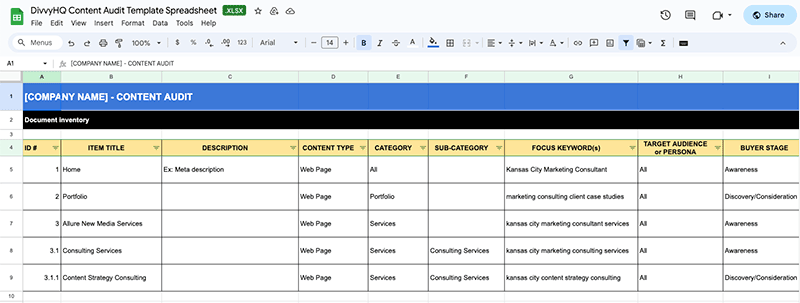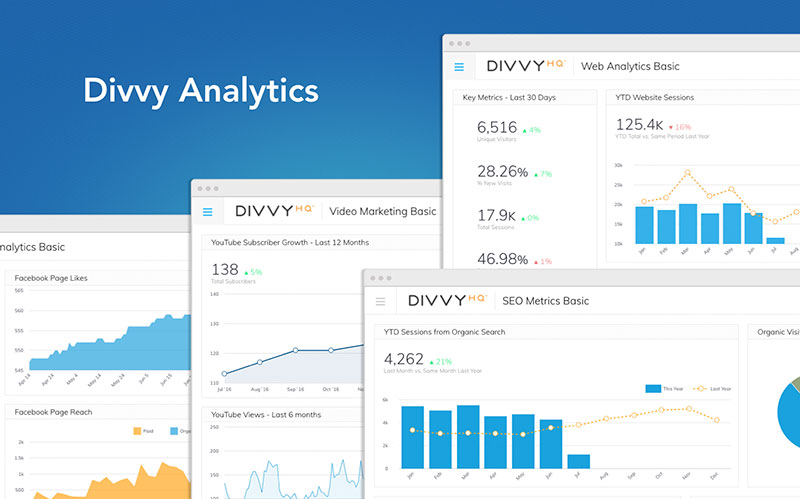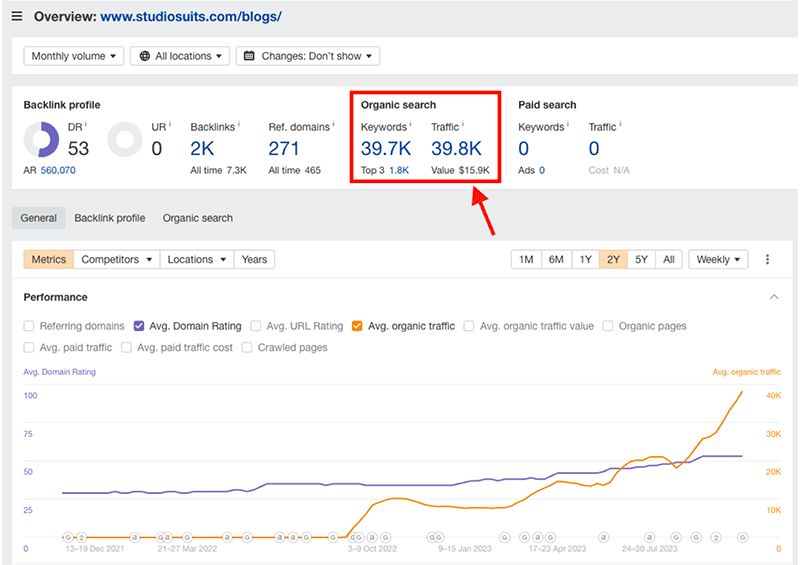It doesn’t matter how cliche it sounds. Content is king. At least, that’s what 96% of marketers say.
And if your website’s content isn’t up to par, it could hurt your site’s performance, hinder your SEO rankings, and prevent you from generating quality organic traffic.
Do you have content that’s not converting? What about duplicate or outdated content?
If so, it might be time to do some content pruning. It’s the process of updating or removing content that’s no longer relevant, not getting any traffic, or not serving its purpose.
By removing underperforming content, you can improve your site’s overall health.
It’s like pruning a tree. When you remove dead branches and leaves, you enhance the tree’s stability, appearance, shape, and growth.
So, you’re essentially getting rid of content that’s dead weight so your website can thrive. But where do you start?
This blog will help you navigate the content-pruning process.
In This Article
How to Get Started With Content Pruning
Follow this step-by-step guide to optimizing your site with content pruning.
1. Create an Inventory of All Your Content
Taking an inventory of your website content will help give you a big-picture view of what you’re working with and how much content your site has. As a result, you’ll have an idea of what you need to audit later.
To create an inventory of your site, go through your content management system (CMS) and take inventory of all your pages and blog posts.
As you do this, be sure to include the following:
- URL
- Page title
- Topic
- Metadata
- Media content assets like images, audio, videos, PDFs, graphics, etc.
- Target keywords
- Date published
- Internal linking
- Author
- Categories
- Tags
You can manually gather all of this information or save yourself a headache by outsourcing content marketing.
Consider leveraging a content inventory template. You can search Google to find a template, or you can use Divvy’s template!
Then, open the template in Microsoft Excel or Google Sheets. Once you do that, you’ll have all the important categories ready to go. All you need to do is just organize your data.
Screenshot: DivvyHQ’s Content Audit Template
2. Conduct a Website Audit
Creating a content inventory is an important first step in understanding the depth and breadth of your content. It’s good structured data, but it won’t tell you much about the quality of your content and how to improve it.
The next step is to turn that data into information you can actually use with a content audit.
Take your content inventory list and add more data using a web analytics tool like Google Analytics and/or Google Search Console. This data should tell you about your site’s performance. For example:
- Traffic (51% of marketers use this to measure their content’s success)
- Conversions
- Internal links
- Shares
- Bounce rate
- Time on page
- Search engine performance
Gathering this data will give you a general idea of how well your pages and posts perform. It’ll answer questions like, “Is my content getting enough traffic, conversions, or shares?”
This will help you identify which pages aren’t serving a real purpose on your site.
You can take things further by using a content audit tool that analyzes content quality and SEO performance. You’ll learn if your site has:
- Outdated information: Your pages and/or posts have information that’s outdated or no longer relevant.
- Thin content: You have some blog content on your site that provides little to no value to readers. It lacks depth, structure, or quality.
- Duplicate content: Your site has repeating content, similar to other content that appears across the web.
Some content auditing tools feed you with recommendations once they crawl and/or audit your content. You can use these recommendations to either eliminate low-quality content or improve it.
If you’re gathering data from more than one place, it can be difficult to keep track of and make sense of your analytics.
Consider using a content analytics tool like Divvy to track and analyze your website content performance. You’ll get access to robust, pre-configured dashboards that bring multiple streams of marketing data into one platform.
3. Analyze Your Content Based on KPIs, Goals, and Criteria
Setting goals for your content is important because you want to be able to measure it against something once you conduct an audit.
Did you create your content to rank? If so, you’ll want to measure your pages against SEO metrics using the best SEO tools you can find.
Did you create a landing page dedicated to promoting your product? Consider looking at your conversion rate.
So, for every page, set a goal and then determine if your content has met the criteria you set.
Add the page names, URLs, and other key information to a spreadsheet. Also, list the data on how that content performs.
But if you have pages upon pages of content, this process can be slow and overwhelming. In that case, it helps to focus on specific topics necessary for your business or personal brand.
This is content pruning on a smaller scale, but it can make a huge difference in the long run or lead to faster, better results on the particular topic you focus on.
4. Decide Whether to Remove or Improve Low-Quality Pages
After analyzing your content, take note of your poor-performing pages. This might include content that’s not getting much traffic, has few internal or external links, has poor social media performance, is outdated, or lacks value.
All of these are ripe for pruning. But before you reach for your hedge trimmers, removal isn’t the only option. You can also improve the content or make it non-indexable.
But how do you know what to remove, make better, or hide?
Improve It
Let’s start with the option to improve. A while ago, you wrote a high-quality post, but it’s ranking on page two for your target keyword.
The post would be a great candidate for updating and improving. You can add more up-to-date information or stats.
Or, add more value with great examples, illustrations, or a video. You could also add internal links from any related content.
Prune It
Pages and posts to get rid of don’t add any value to your site. They may be old announcements or events. They could be irrelevant topics that no one cares about anymore.
Or, you created better, more up-to-date content, so you don’t need the old content anymore.
But don’t get too scissor-happy. You could merge the two posts together for some quality skyscraper content.
If you do decide to remove the post, make sure to redirect the URL to the preferred one. The alternative is that your audience will land on a non-existent page, which not only causes frustration but could also hurt your SEO efforts.
Hide It
Don’t want to get rid of a post? Have a page that doesn’t need to be improved but doesn’t do much for your general audience?
Consider de-indexing it from the search engines. This is a good option for pages you tailor to a particular audience, but you don’t want them to compete with more general posts on the same topic in the search engines.
So, instead of indexing the post, you can share the link with your more specific audience.
5. Maintain Your Results
The best way to get rid of something is never to create it in the first place. Imagine how simple your life would be if you could keep low-quality content to a minimum by preventing it. This is how high you should aim.
Creating high-quality content from the beginning can take you and your blog far.
Take the wellness brand Hims & Hers, which has never had an easy journey to success. When people learn that it sells products such as sildenafil, they start thinking the brand is scandalous or sales-oriented.
But the reality is that Hims & Hers is helping a lot of people around the globe treat their sexual health, hair loss, and mental health issues.
And when people need to learn something new in the sexual health field, they’ll likely Google it.
This is where they start to value the educational content Hims & Hers publishes. Its articles are relevant, well-written, checked, and approved by health professionals. It was even named as D-To-C brand of the year by Ad Age in 2021.
StudioSuits, known for its expertise in crafting men’s custom suits and pants, is another remarkable example of a business that continuously posts high-quality content.
The brand has mastered the art of generating highly targeted traffic by consistently delivering top-notch content on its blog, which not only educates but also engages its audience.
The result? Almost 40,000 people tune into their website every month to read about the latest fashion trends. That equates to $15,900 in traffic value, all from high-quality content.
In Closing
A healthy garden requires regular pruning. Removing dead leaves and branches gives your plants room to grow healthier, more vibrant leaves. This applies to your website, too. It needs constant maintenance and, every now and then, a content refresh.
That’s essentially what content pruning is. As you cut the dead weight holding you back, you might see higher rankings in search results and, ultimately, more traffic to your site.
For more great tips, tricks, and how-tos, subscribe to the DivvyHQ blog today!





